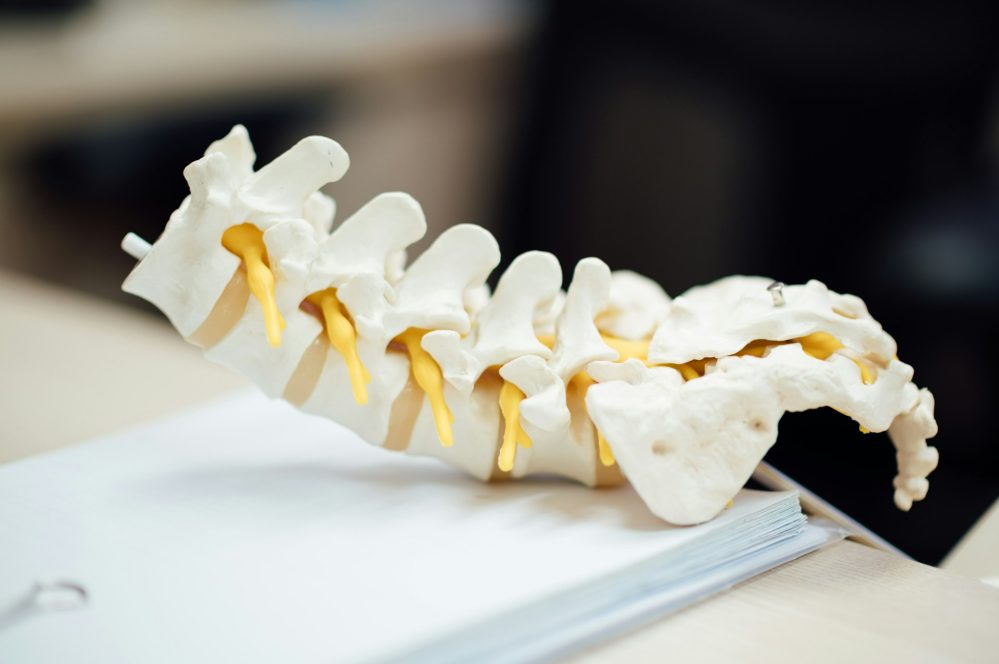Acupuncture is an effective alternative treatment for back pain. It offers a noninvasive approach that can alleviate discomfort and promote healing.
Back pain is a prevalent problem impacting people globally, varying from minor discomfort to intense, disabling pain. Although traditional treatments such as medications and physical therapy are frequently employed to manage symptoms, a growing number of individuals are opting for alternative therapies for additional relief. Among these, acupuncture has gained significant popularity.
In this article, we will explore the benefits of acupuncture for back pain, consider its potential advantages over conventional methods, and examine important factors before starting treatment.
Can Acupuncture Help With Back Pain?

Acupuncture, a fundamental aspect of Traditional Chinese Medicine (TCM), has been used for millennia and operates on the principle that the body’s vital energy, known as “Qi,” circulates through designated pathways called meridians. By placing fine needles at precise points along these meridians, acupuncture seeks to restore Qi balance, which helps in healing and alleviating pain. In recent times, this ancient technique has become widely recognized as a complementary treatment for various issues, including back pain.
Research and clinical trials have examined acupuncture’s effectiveness for back pain, generally showing positive but varied results. A meta-analysis demonstrated that acupuncture was more beneficial than no treatment and offered modest improvements over standard care for chronic pain, including back pain.
Additional studies have indicated that acupuncture can lessen both the intensity and frequency of back pain episodes, providing potential relief when traditional treatments fall short. Despite its recognized safety and efficacy, the results can differ among individuals, and further research is necessary to better understand its mechanisms and best practices.
How Acupuncture Works for Back Pain
Acupuncture, a treatment option that puts you in control of your health, has been shown by modern research to effectively alleviate back pain. One of its key mechanisms is the stimulation of the nervous system, which triggers the release of endorphins—your body’s natural pain-relievers. These endorphins interact with the brain and spinal cord, blocking pain signals and reducing the perception of pain.
In addition to its analgesic effects, acupuncture is believed to reduce inflammation, a major factor in chronic pain conditions. Acupuncture helps your body reduce inflammation by increasing natural anti-inflammatory chemicals, while also lowering substances that cause inflammation and pain. These findings are backed by clinical trials that demonstrate acupuncture’s ability to significantly lower inflammatory markers in patients with chronic pain.
Acupuncture doesn’t just provide immediate relief; it also sets the stage for long-term recovery. It enhances blood circulation in affected areas, as shown by studies utilizing Doppler ultrasound. This improvement in microcirculation increases the flow of oxygen and nutrients necessary for tissue repair. The enhanced circulation reduces muscle tension and helps flush out metabolic waste, further relieving pain and improving mobility. For patients with chronic back pain, these effects can be particularly beneficial, offering a pathway to long-term recovery.
Benefits of Acupuncture for Back Pain
Acupuncture provides numerous benefits for individuals struggling with back pain, making it an appealing treatment option, especially for those seeking alternatives to medication. One of its primary advantages is effective pain relief.
By stimulating specific acupoints that correspond to pain pathways, acupuncture alleviates discomfort and reduces pain intensity. Unlike pharmaceuticals, acupuncture achieves this without the risk of side effects like dependency or gastrointestinal issues, making it a safe and suitable choice for long-term management.
Moreover, acupuncture is highly effective at addressing muscle tension and spasms, common causes of back pain. By promoting relaxation in tight muscles, acupuncture reduces the frequency and severity of spasms, providing long-lasting relief. This muscle relaxation helps prevent chronic pain from worsening over time. Research found that patients who received acupuncture experienced a notable decrease in muscle tension, supporting its use as a long-term pain management strategy.
Beyond pain relief and muscle relaxation, acupuncture also improves mobility and flexibility by addressing physical restrictions in the body. For people whose daily activities are limited by back pain, enhanced range of motion is crucial. A review reported significant improvements in patients’ physical function following acupuncture treatment, enabling them to regain mobility and improve their quality of life.
Lastly, acupuncture has mental health benefits, helping to reduce stress and anxiety—factors known to exacerbate chronic pain. Acupuncture encourages the release of endorphins, which counteract the elevated levels of stress hormone cortisol, promoting a sense of calm that supports the body’s healing process. This holistic approach targets both the physical and psychological aspects of back pain, making acupuncture a comprehensive therapy for long-term pain relief.
Risks and Considerations

Acupuncture is widely regarded as a safe and effective treatment when performed by a trained professional; however, like any medical procedure, it comes with potential risks and considerations.
Common side effects are typically mild, including slight bruising or soreness at the needle insertion sites. These reactions are usually temporary and resolve on their own without further intervention.
Nonetheless, there is the rare possibility of more serious complications, such as infections, particularly if non-sterile needles are used or if the acupuncturist does not adhere to strict hygiene and safety standards. This underscores the importance of seeking out licensed and certified practitioners who follow proper protocols, including using sterile, single-use needles.
Certain groups of people need to exercise additional caution when considering acupuncture. Individuals with bleeding disorders or those on anticoagulants, for instance, may face a heightened risk of excessive bleeding or bruising due to their condition or medications.
Likewise, while acupuncture is commonly used during pregnancy to alleviate pain, nausea, and other discomforts, it must be approached with caution. Some acupoints have the potential to stimulate uterine contractions, which could lead to premature labor. For this reason, it is vital that pregnant women consult their obstetricians or healthcare providers before pursuing acupuncture to ensure that it is performed safely and in the appropriate manner.
Given these potential risks, a thorough consultation with a healthcare provider is essential before starting acupuncture, especially for individuals with underlying health conditions. Discussing any concerns with both a physician and a qualified acupuncturist ensures that the treatment plan is tailored to the individual’s needs and health status.
How to Get the Most Out of Acupuncture

To maximize the benefits of acupuncture for back pain, it’s important to prepare properly for each session. Wearing comfortable, loose-fitting clothing allows easy access to acupoints and ensures a more relaxed experience.
Furthermore, having a light meal beforehand can help maintain energy levels during the session while avoiding heavy meals that might cause discomfort when lying down.
To maximize the benefits of acupuncture, it can be helpful to integrate it with other treatments like physical therapy, exercise, or massage. These additional therapies can address the underlying causes of back pain and enhance overall results.
Additionally, adopting a healthy lifestyle is essential for sustaining long-term back health. Practicing good posture, incorporating ergonomic practices at work, and staying active with regular stretching and strengthening exercises can help prevent future pain and ensure that the benefits of acupuncture are long-lasting.
What to Expect From Acupuncture Sessions
A typical acupuncture session begins with an initial consultation, where the acupuncturist reviews your medical history, discusses your symptoms, and develops a tailored treatment plan.
During the treatment, you will relax on a table as the acupuncturist carefully places thin, sterile needles at targeted points on your body. The quantity and positioning of the needles will be tailored to your specific condition and objectives. Each session typically lasts between 30 to 60 minutes, with the needles remaining in place for approximately 20 to 30 minutes.
The number of sessions required for noticeable improvement can vary; some people may feel relief after just one or two treatments, while others may need several sessions over a few weeks to experience significant benefits. During the treatment, patients might feel a slight tingling, warmth, or dull ache at the needle sites, but these sensations are typically mild.
After the session, you may experience immediate pain relief, increased relaxation, or a sense of well-being. In some cases, the full effects of acupuncture may be delayed, with improvements becoming more noticeable in the days following treatment. Communicating with your acupuncturist throughout the process is important to ensure the best possible outcomes.
Wrapping Up
Acupuncture provides numerous advantages for those with back pain, such as effective pain relief, decreased muscle tension and spasms, improved mobility, and increased overall well-being. Its dual capability to alleviate physical discomfort and foster relaxation makes it an essential part of a thorough pain management approach.
If you’re interested in exploring acupuncture further or pursuing a career in this field, consider the master’s program at AIAM. Our program provides the training needed to become a licensed acupuncturist and help others achieve relief and improved health.
Frequently Asked Questions (FAQs)
How many acupuncture sessions are needed for back pain relief?
The number of sessions needed can vary, but many people experience noticeable improvement after 4 to 6 treatments.
Can acupuncture be used alongside other treatments for back pain?
Yes, acupuncture can be effectively combined with other treatments, such as physical therapy and exercise.
Is acupuncture safe for pregnant women with back pain?
Acupuncture can be safe during pregnancy, but it’s important to consult with a healthcare provider and choose an acupuncturist experienced in treating pregnant women.